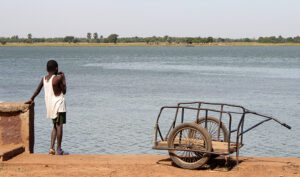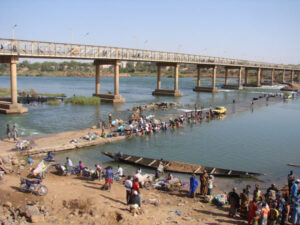Managing Transboundary Climate Risk Along the Niger River – Improving Water Resource Management While Ensuring Food Security and Access to Energy
 PlanAdapt supports GIZ, the International Water Management Institute (IWMI), Wetlands International, the International Union for Conservation of Nature (IUCN) and multiple local partners in designing a large-scale programme promoting the climate-water-nexus and integrated water resource management in the Niger River Basin.
PlanAdapt supports GIZ, the International Water Management Institute (IWMI), Wetlands International, the International Union for Conservation of Nature (IUCN) and multiple local partners in designing a large-scale programme promoting the climate-water-nexus and integrated water resource management in the Niger River Basin.
The Niger river basin, home to 130 million people, is a vital and complex asset of West and Central Africa. The continent’s third-longest river, the Niger is more than just a source of water. For the people of the nine riparian countries it is a source of identity, a route for migration and commerce, a source of conflict, and now a catalyst for cooperation. Niger, with about 23 percent of the Basin within its borders, depends on river navigation (through Nigeria) to reach the sea. Nigeria, a major food grower on rain-fed and irrigated land, is the final downstream country. Its borders enclose some 80 percent of the Basin’s population and about 28 percent of its territory.
Cooperation between the riparian countries is key to alleviate the serious problems facing development in the region. For example, better water management facilitates the expansion of irrigation farming. This would in turn lead to higher yields and improve food supply. The energy supply can also be improved by building dams. Relations between the riparian states in the Niger Basin have also been put on a firm legal basis to a significant extent. This has helped establish important political, institutional and legal foundations for stronger regional cooperation but the potential of the cooperation has yet to be fully harnessed. For instance, hardly any joint projects on the development of transboundary water resources have been successfully implemented to date. The regional institutions, such as the Niger Basin Authority, do not fully exercise their mandates to provide advice and guidance on the sustainable development of transnational water resources.
 The design will recognise and put at the centre the Integrated Water Resources Management (IWRM) approach. IWRM is a process which promotes the coordinated development and management of water, land and related resources in order to maximise economic and social welfare in an equitable manner without compromising the sustainability of vital ecosystems and the environment. Worldwide, water policy and management are beginning to reflect the fundamentally interconnected nature of hydrological resources, and IWRM is emerging as an accepted alternative to the sector-by-sector, top-down management style that has dominated in the past. The basis of IWRM is that the many different uses of finite water resources are interdependent. High irrigation demands and polluted drainage flows from agriculture mean less freshwater for drinking or industrial use; contaminated municipal and industrial wastewater pollutes rivers and threatens ecosystems; if water has to be left in a river to protect fisheries and ecosystems, less can be diverted to grow crops. There are plenty more examples of the basic theme that unregulated use of scarce water resources is wasteful and inherently unsustainable.
The design will recognise and put at the centre the Integrated Water Resources Management (IWRM) approach. IWRM is a process which promotes the coordinated development and management of water, land and related resources in order to maximise economic and social welfare in an equitable manner without compromising the sustainability of vital ecosystems and the environment. Worldwide, water policy and management are beginning to reflect the fundamentally interconnected nature of hydrological resources, and IWRM is emerging as an accepted alternative to the sector-by-sector, top-down management style that has dominated in the past. The basis of IWRM is that the many different uses of finite water resources are interdependent. High irrigation demands and polluted drainage flows from agriculture mean less freshwater for drinking or industrial use; contaminated municipal and industrial wastewater pollutes rivers and threatens ecosystems; if water has to be left in a river to protect fisheries and ecosystems, less can be diverted to grow crops. There are plenty more examples of the basic theme that unregulated use of scarce water resources is wasteful and inherently unsustainable.
